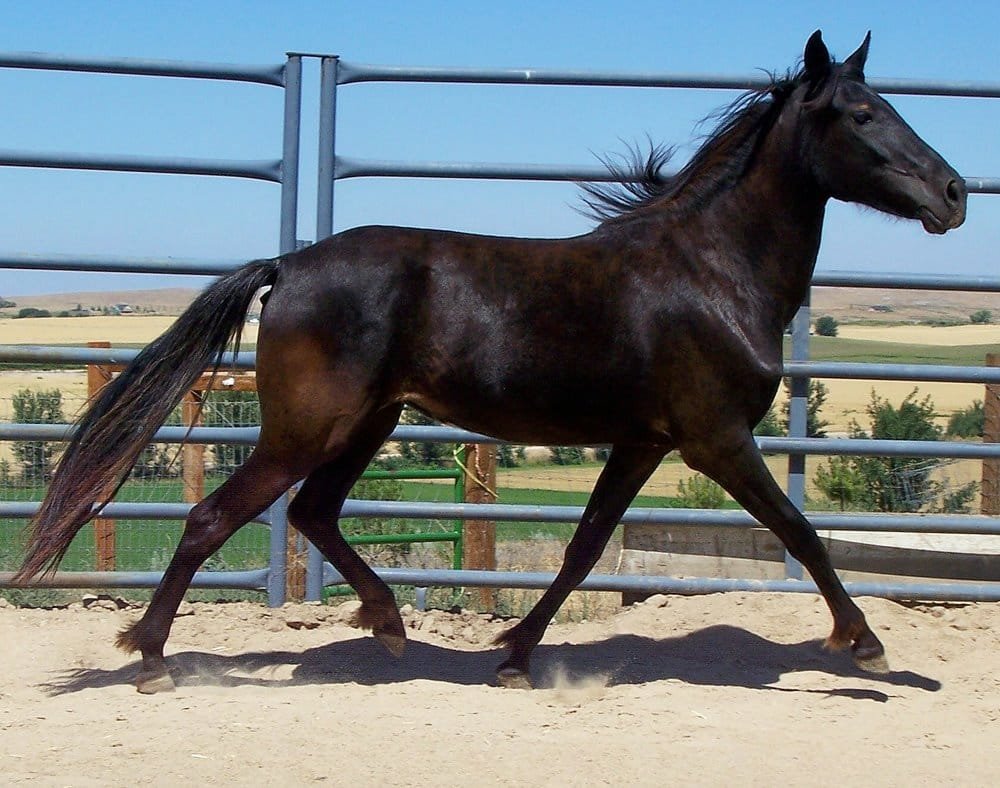When people talk about the world’s most influential horse breeds, names like the Arabian or Thoroughbred often dominate the conversation.
But there’s another breed—less famous, perhaps, but equally important—that quietly shaped the course of horse history: the Barb horse.
Hailing from the arid landscapes of North Africa, the Barb is one of the oldest and most resilient horse breeds in the world. With unmatched endurance, fierce intelligence, and a fiery spirit, the Barb has influenced countless other breeds, served in wars and royal courts, and played a major role in shaping the horses we know today.
Despite its low profile outside of the horse world, the Barb is a breed worth knowing. It’s a living symbol of strength, heritage, and cultural pride.
Ancient Origins in Harsh Lands
The Barb horse traces its roots to Morocco, Algeria, Tunisia, and Libya—regions known for their hot deserts, rocky mountains, and rugged terrain. In these challenging environments, only the hardiest animals could thrive, and over centuries, the Barb developed into an incredibly tough and adaptable horse.
Its exact origins are debated. Some historians believe the Barb developed independently of the Arabian horse, while others suggest a shared ancestry or crossbreeding between the two. What’s clear is that the Barb has existed in North Africa for at least 1,000 years, and possibly much longer.
Wherever it came from, it became the horse of choice for Berber tribes, who prized it for its stamina, speed, and loyalty. These horses were often partners in travel, trade, and battle—and their qualities made them legendary.
Built for Endurance
One of the Barb’s most impressive traits is its stamina. These horses were bred to survive in the harshest environments, going long distances without water, food, or rest. Unlike some modern breeds bred for beauty or sport, the Barb was shaped by survival.
Key Physical Traits:
- Height: 14.2 to 15.2 hands on average.
- Build: Compact and muscular, with strong legs and a short back.
- Head: Straight or slightly convex profile, giving it a unique look compared to the dished face of the Arabian.
- Coat colors: Often gray, bay, chestnut, or black.
- Mane and tail: Thick and coarse, offering protection from the elements.
The Barb’s movement is smooth and ground-covering, making it ideal for long rides over difficult terrain. Its tough hooves and dense bone structure give it durability many modern horses can’t match.
Temperament: Bold but Loyal
Barbs are known for having a bold, intelligent, and spirited temperament. They are not always beginner horses—they can be independent and strong-willed—but they are also deeply loyal to riders who earn their trust.
This combination of bravery and sensitivity made them excellent war horses in the past, and today, it makes them excellent partners for endurance riders and skilled equestrians.
In the hands of a patient and experienced rider, the Barb is willing, responsive, and eager to work.
The War Horse of Empires
The Barb was more than just a tribal companion—it was a horse of empires.
Throughout history, Barb horses were favored by conquerors and royalty. The Moors brought Barbs into Spain during their conquest of the Iberian Peninsula, and from there, the breed’s influence spread across Europe. Many of the foundation horses of famous breeds—like the Andalusian, Lusitano, and even the Thoroughbred—have Barb blood in their veins.
The Barb’s stamina and courage made it ideal for use in cavalry units. In battle, a horse that could stay strong, maneuver quickly, and handle chaos was priceless. The Barb earned its reputation through centuries of war, raids, and resistance.
Influence Around the World
Though lesser known today, the Barb’s global impact is undeniable. Its bloodlines helped shape:
- Andalusians and Lusitanos in Spain and Portugal.
- Thoroughbreds, through early foundation stallions like the Godolphin Arabian, which may have actually been a Barb or a Barb-Arabian cross.
- South American Criollo horses and other colonial breeds, brought over by Spanish explorers.
- American Mustangs, through the horses left behind by the Spanish.
Wherever the Spanish and Portuguese traveled, so did the Barb. It helped create the fast, tough, and clever horses that thrived in the New World.
The Modern Barb: Rare and Revered
Today, purebred Barb horses are rare, and preservation efforts are crucial. In their native countries, organizations and breeders are working hard to protect and promote this important breed. In Morocco, the Barb is considered a national treasure, often seen in traditional exhibitions and cultural festivals like Fantasia, where riders perform synchronized charges on decorated horses.
While not common in sport horse circles, the Barb excels in:
- Endurance riding
- Working equitation
- Trail riding
- Cultural shows and exhibitions
Some breeders have started to cross Barbs with Arabians to produce the Barbo-Arab, combining the endurance of the Barb with the elegance of the Arabian.
Final Thoughts
The Barb horse is a living reminder that strength doesn’t always come from the spotlight. While other breeds have gained global fame, the Barb has stood firm in the background—quiet, powerful, and proud. It represents resilience, heritage, and the deep bond between horse and human across centuries of history.
Whether galloping across the Moroccan desert or influencing modern equine bloodlines, the Barb remains one of the most important and underappreciated horses in the world.
It may not wear a crown, but in the world of horses, the Barb is royalty all the same.

